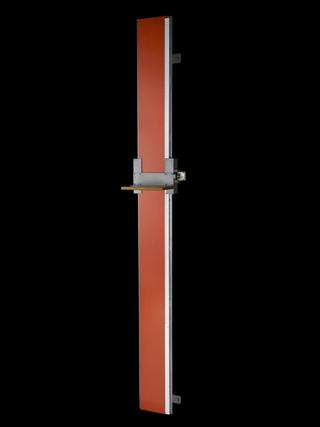




Wooden stand, part of stereograph used by Paul Broca, a pioneering craniologist, to trace profiles of skulls, probably French, 1840-1880.
A stereograph creates a three-dimensional view of its subject. In this case it traced the profiles of skulls. This wooden stand is part of the instrument and was probably made in France. It was used by French surgeon, anthropologist and pioneering craniologist Paul Broca (1824-80). Craniology studied the bones of the skull. Anthropological theories used craniology to explain human evolution and racial differences.
Details
- Category:
- Psychology, Psychiatry & Anthropometry
- Collection:
- Sir Henry Wellcome's Museum Collection
- Object Number:
- A658593
- Measurements:
-
overall: 280 mm x 130 mm x 130 mm, .4kg
- type:
- craniometer
- credit:
- Kandel, M.




